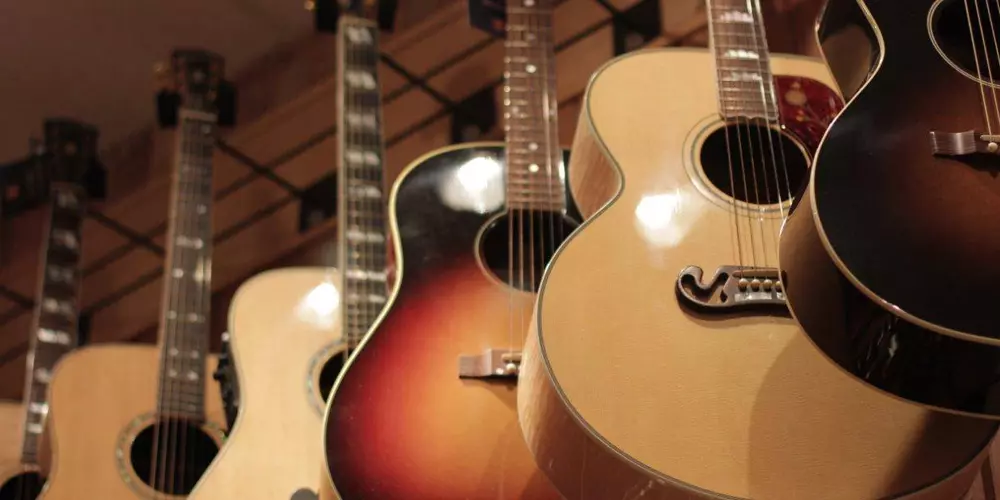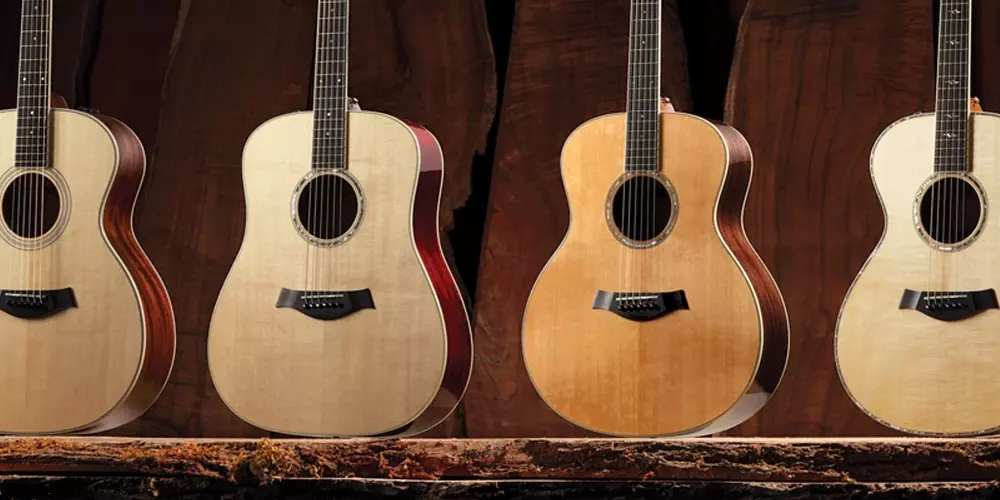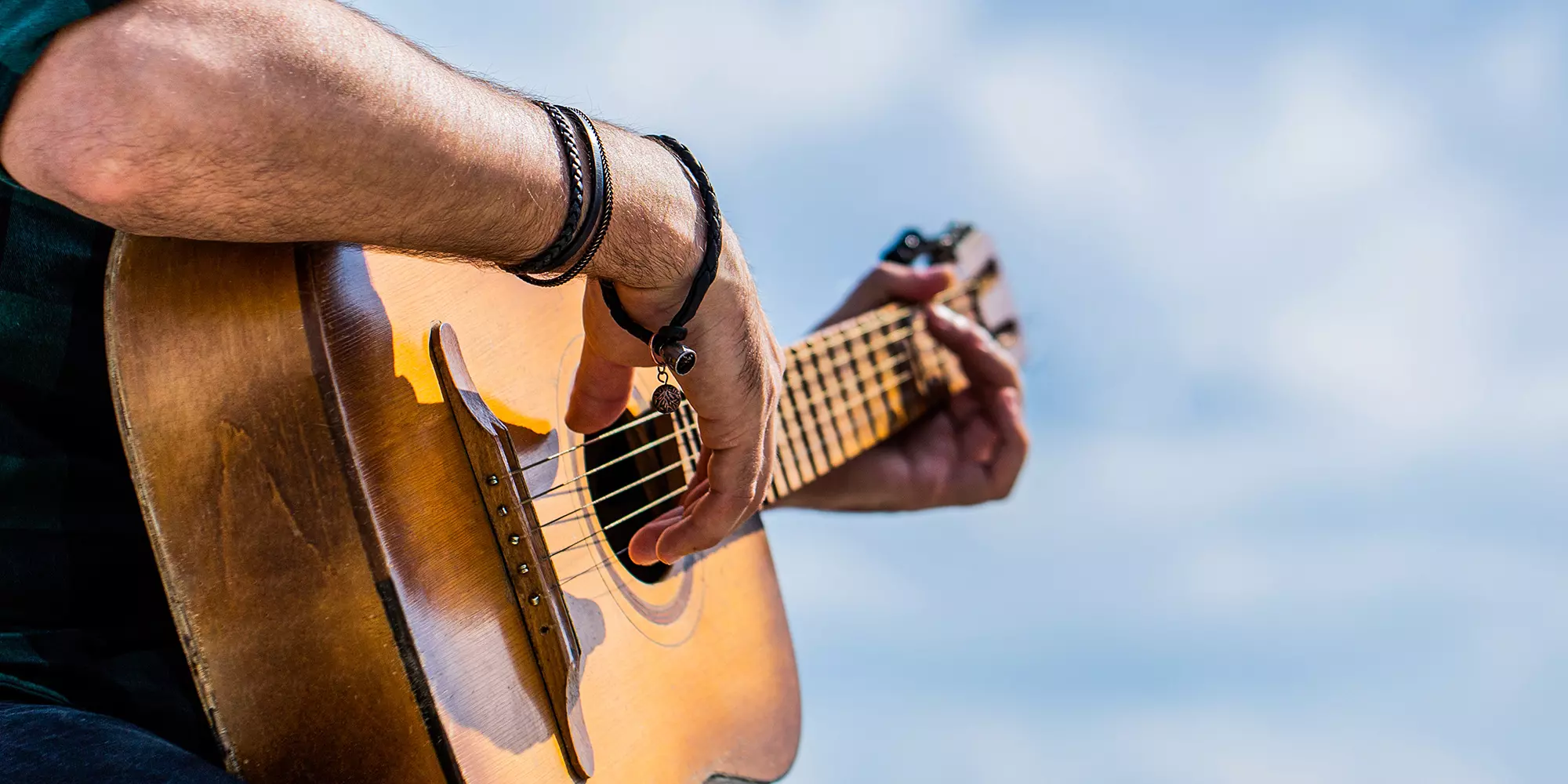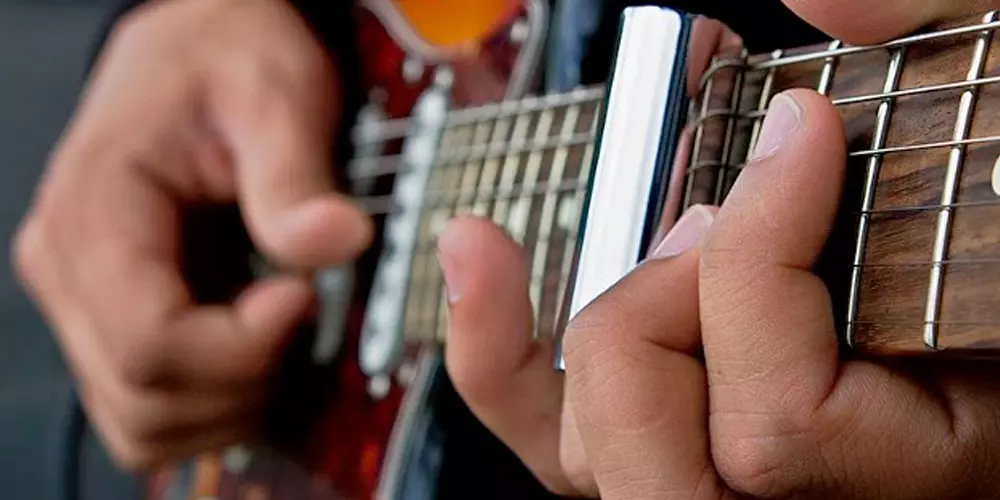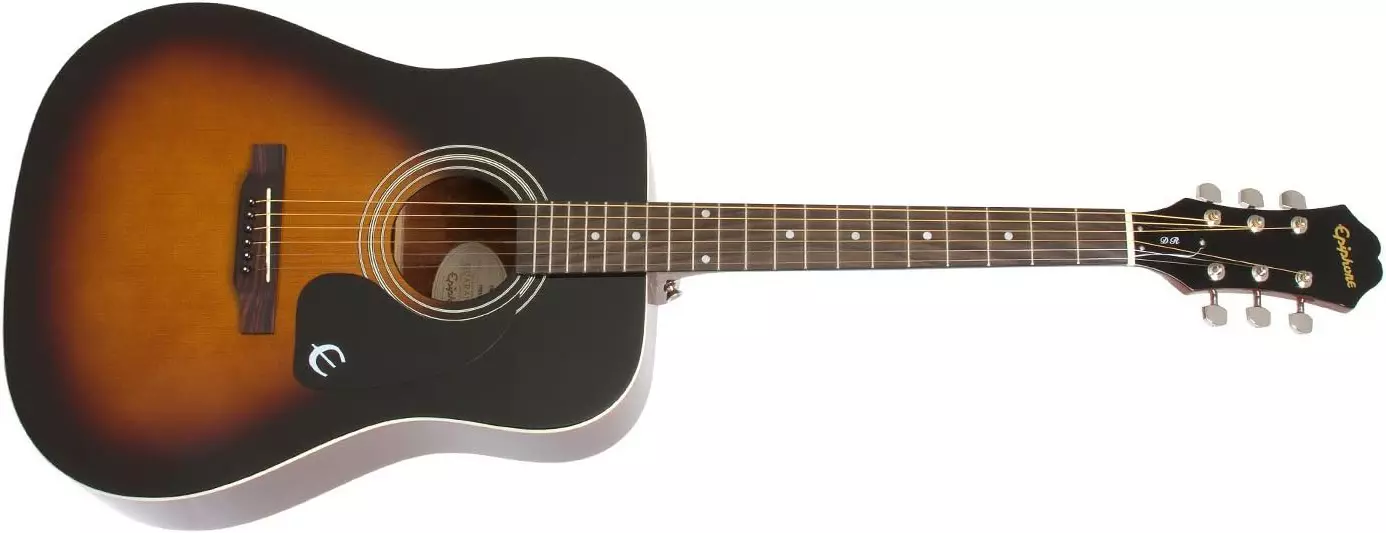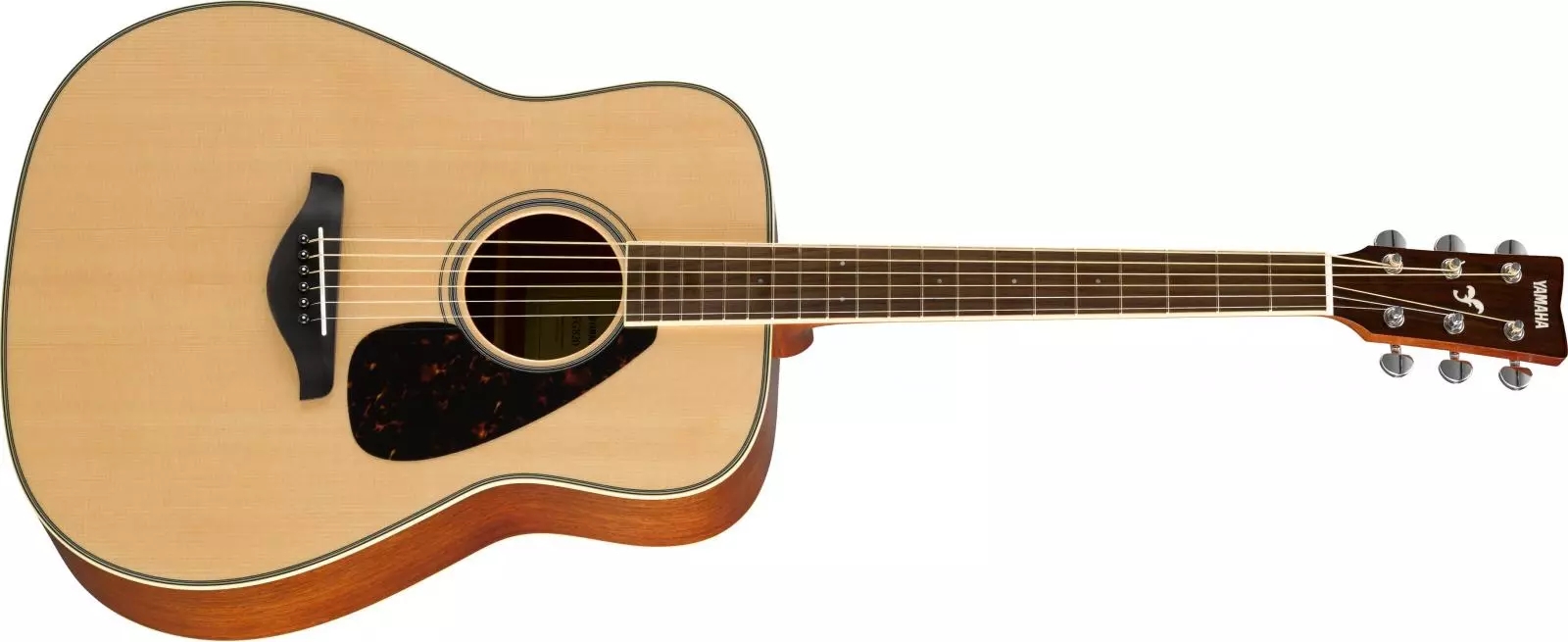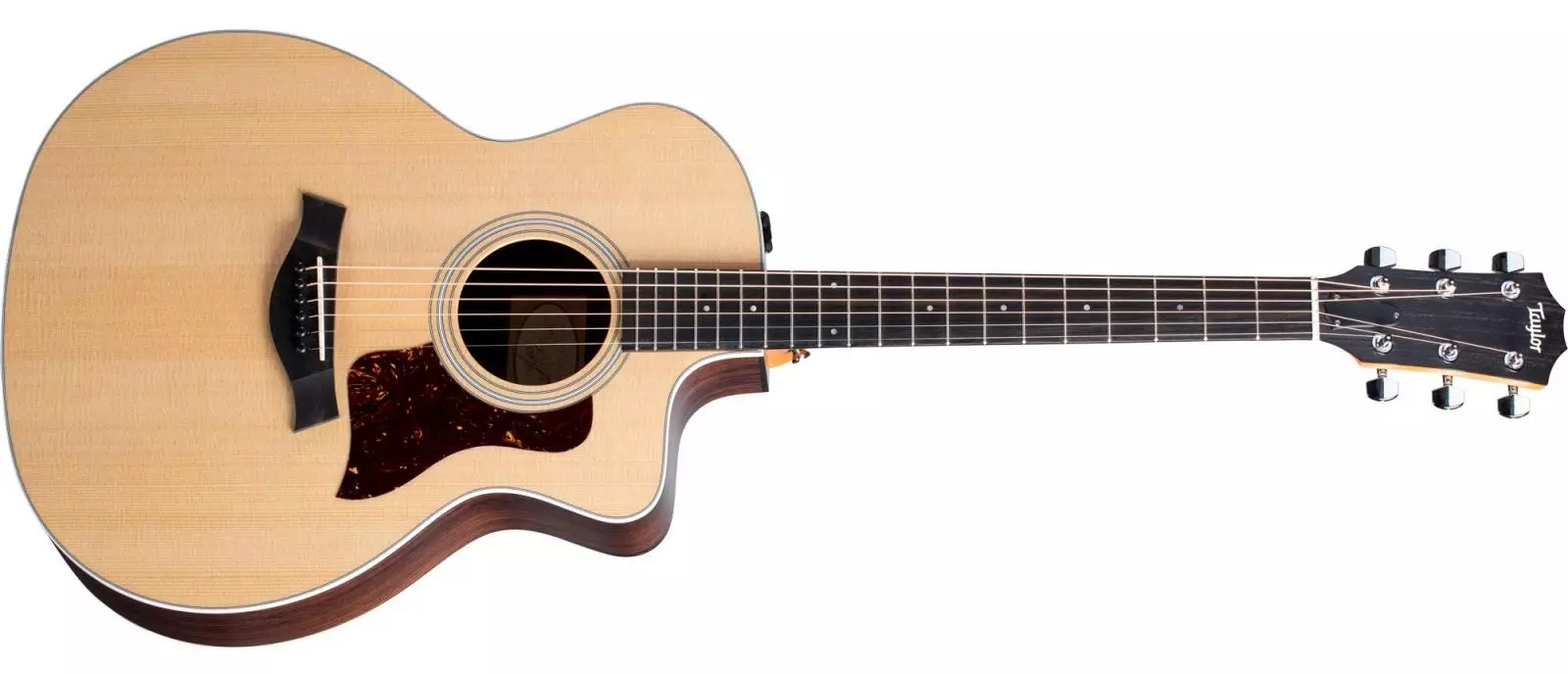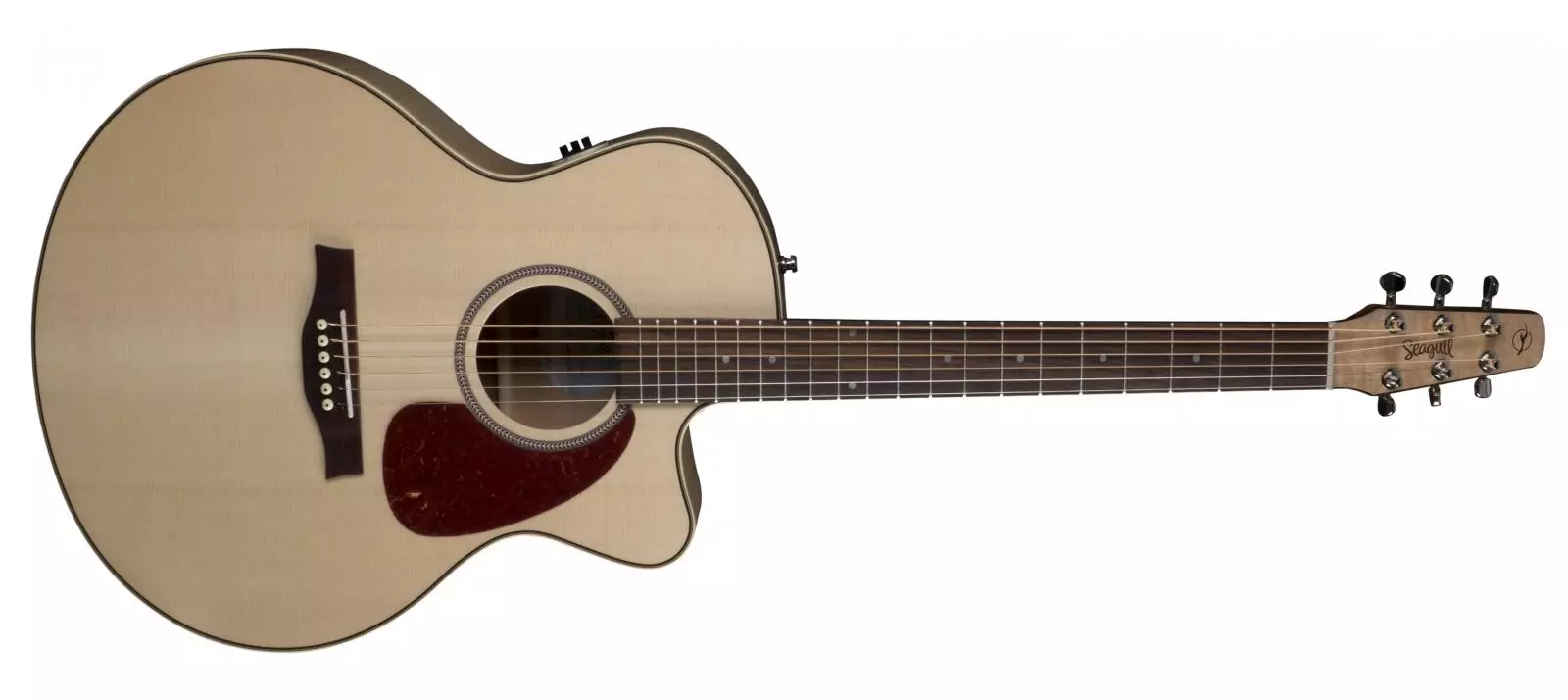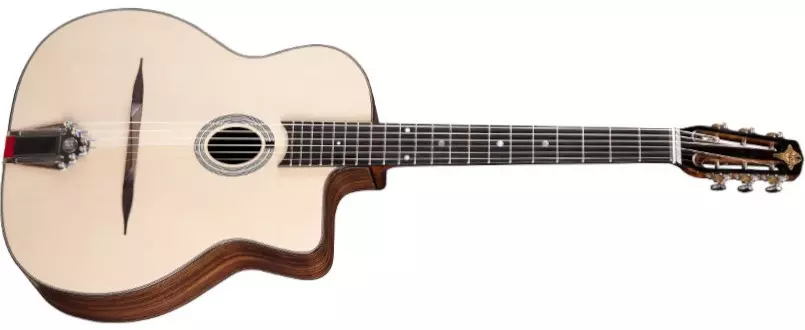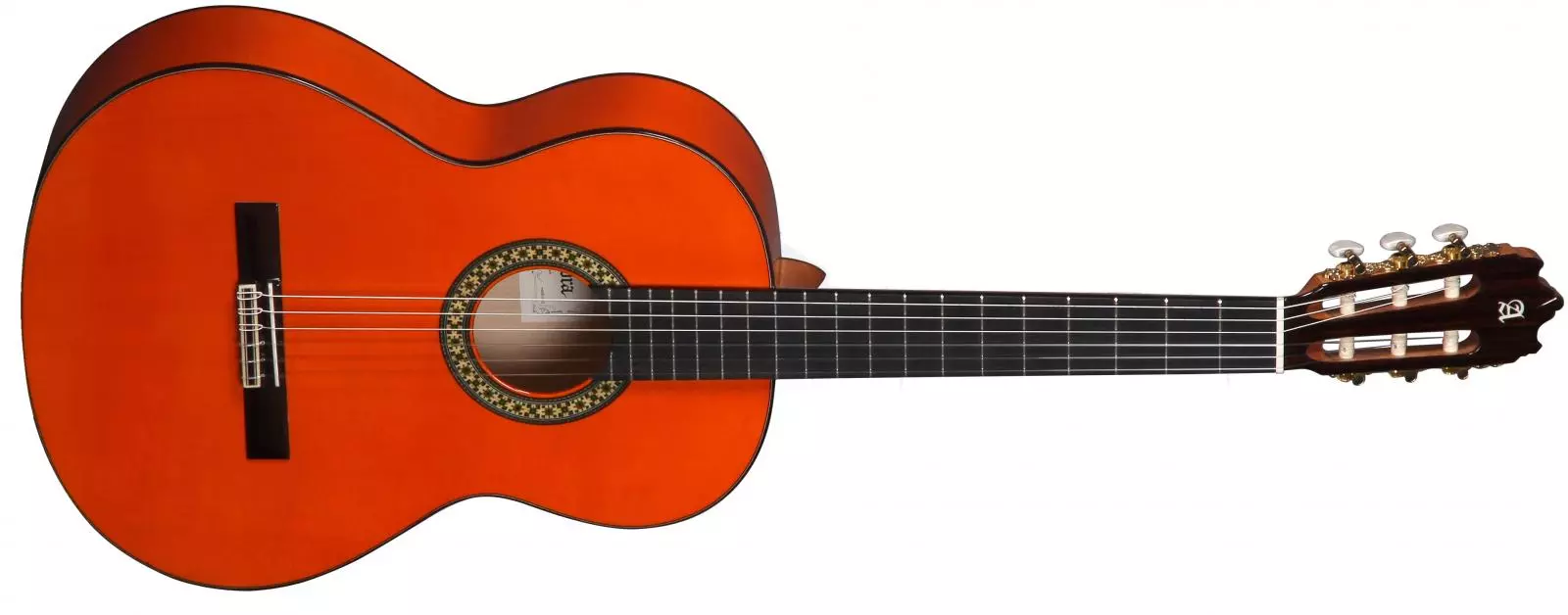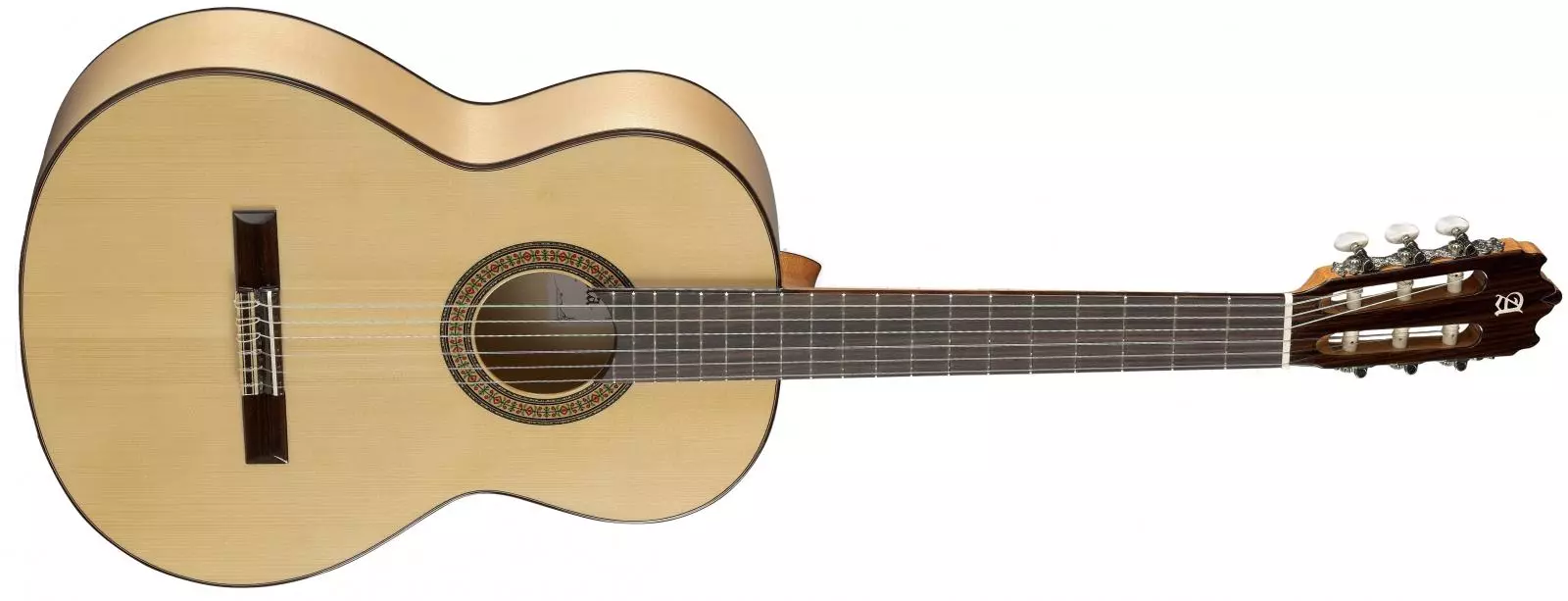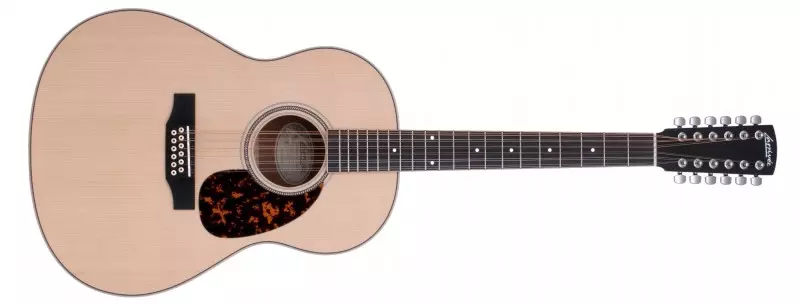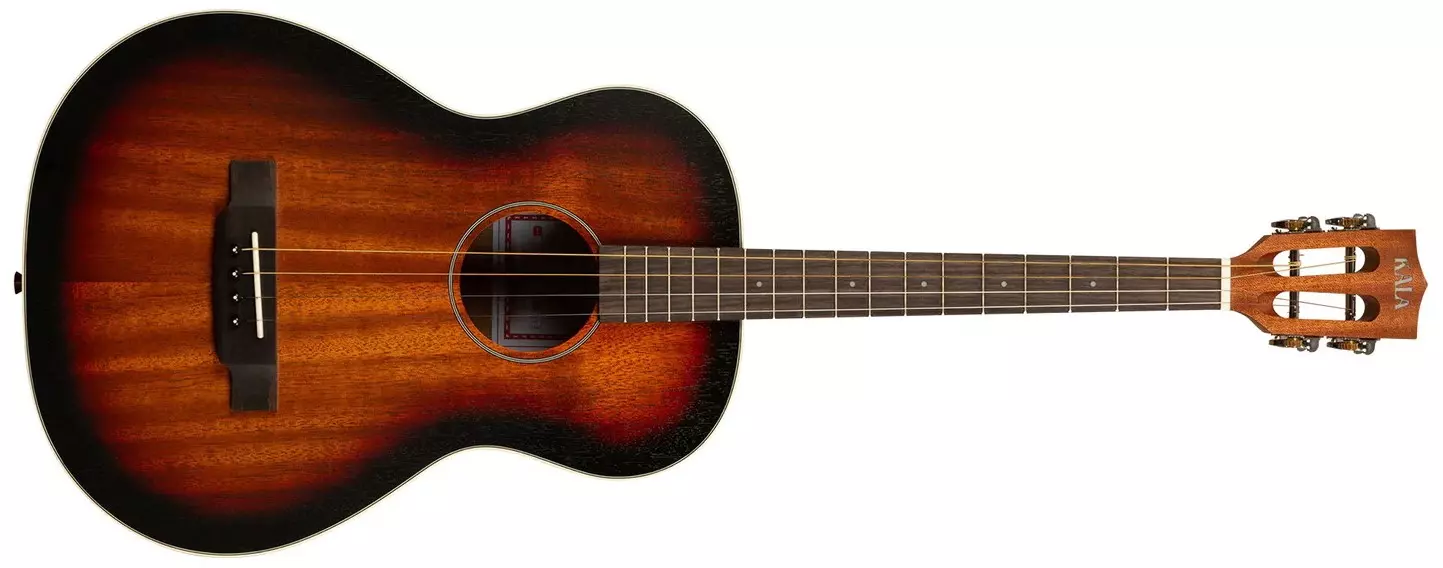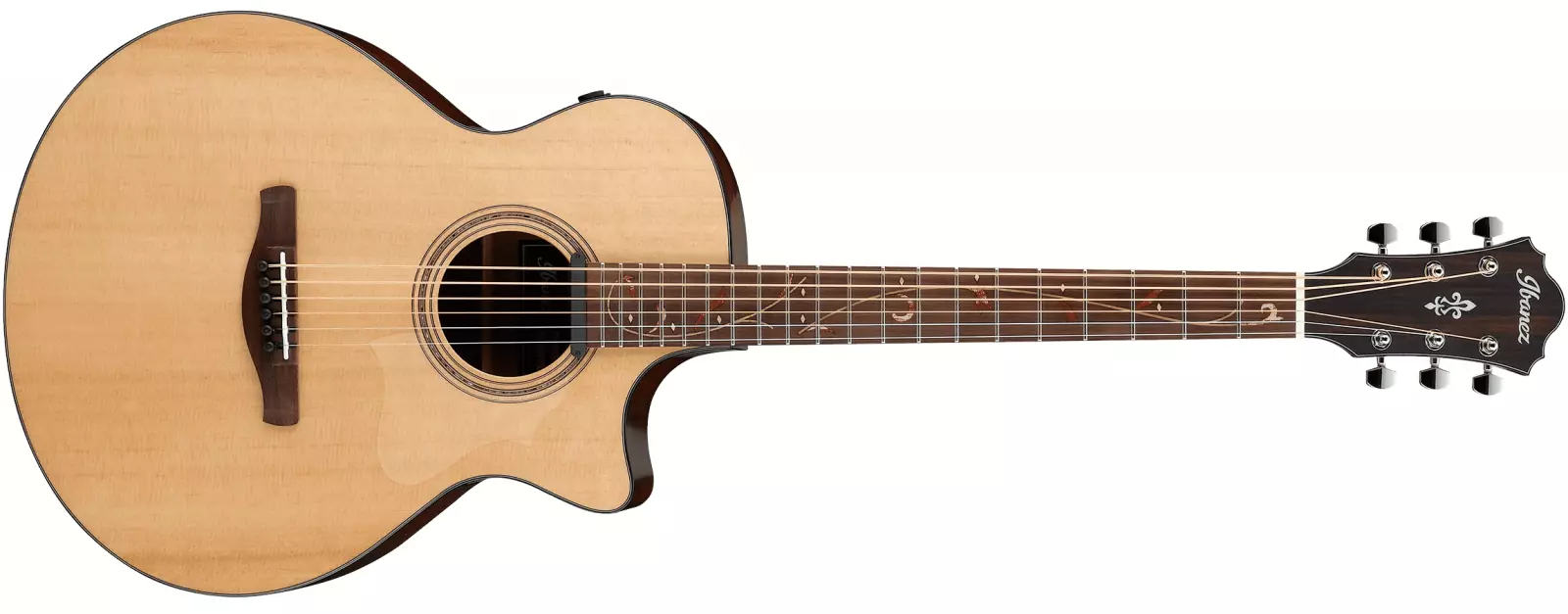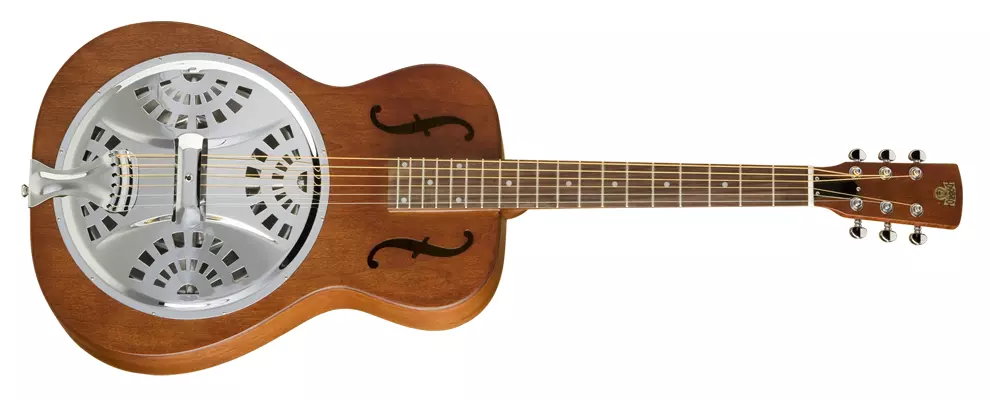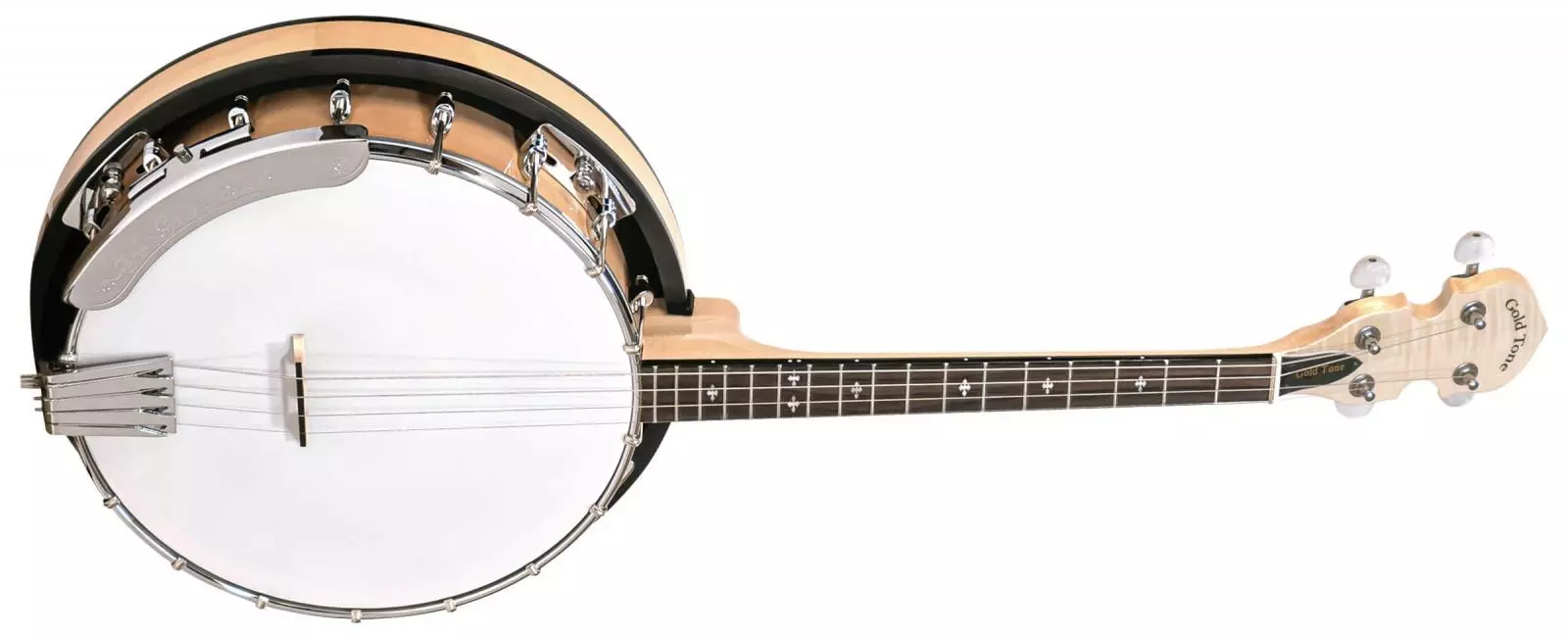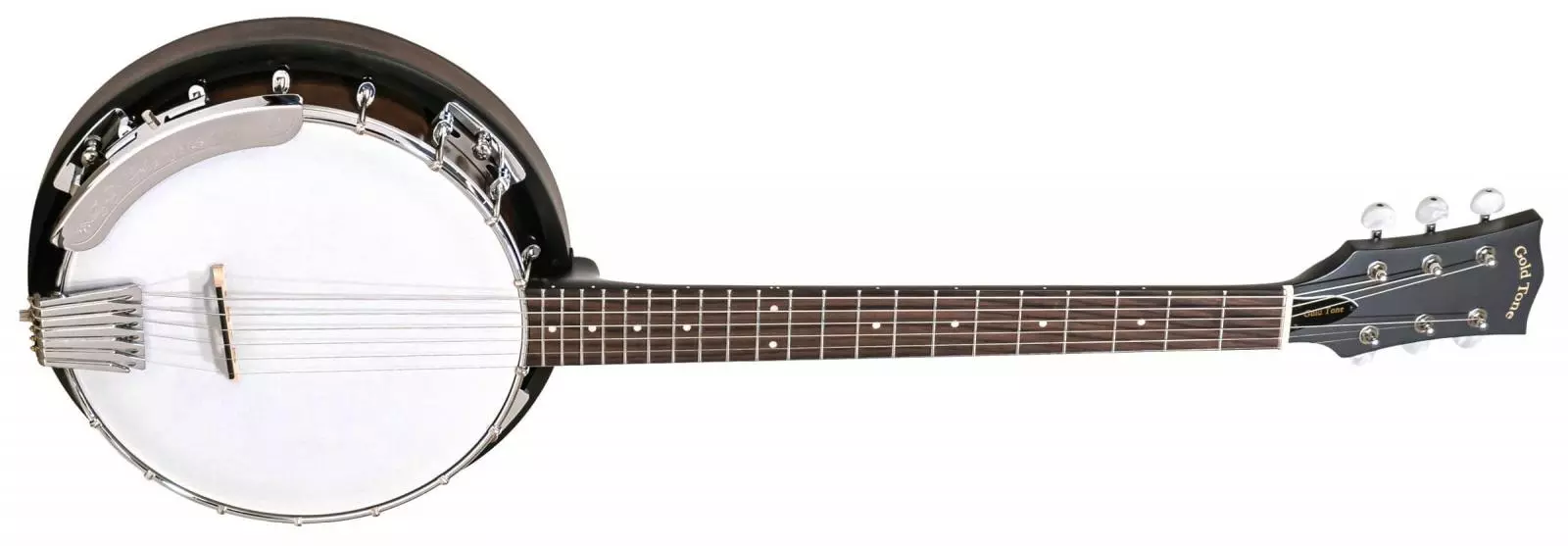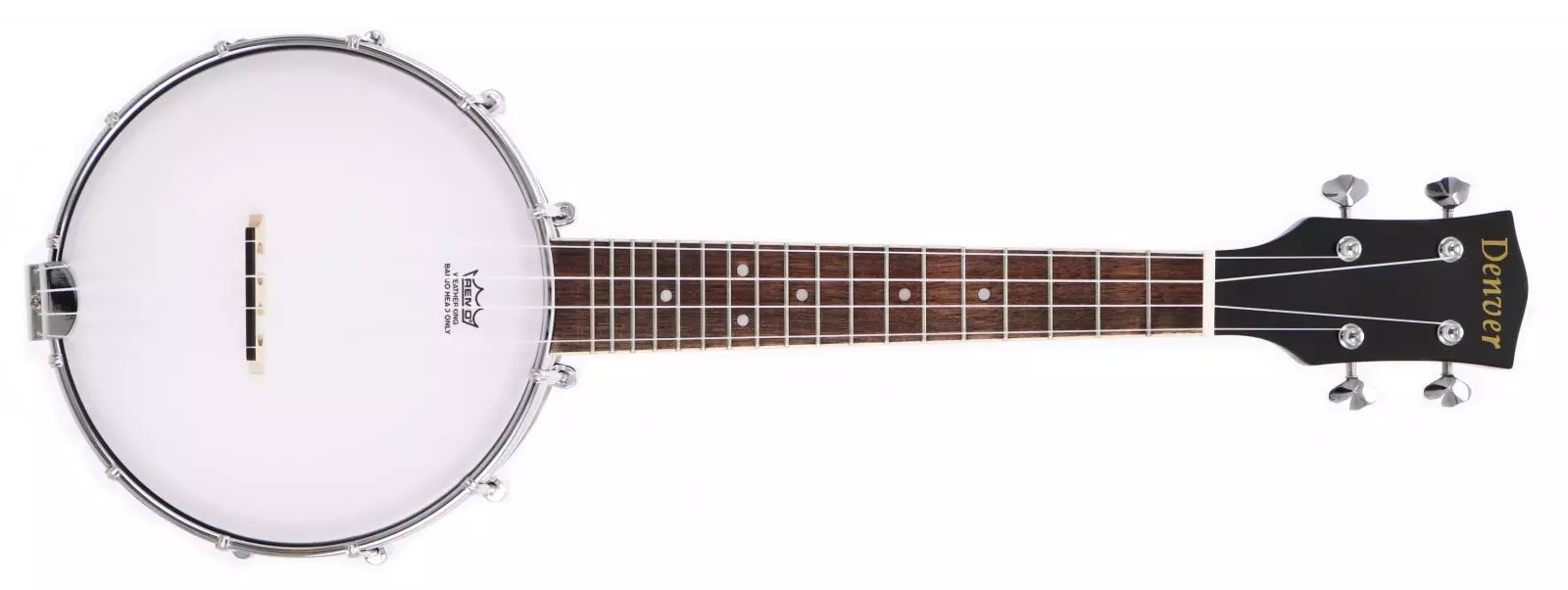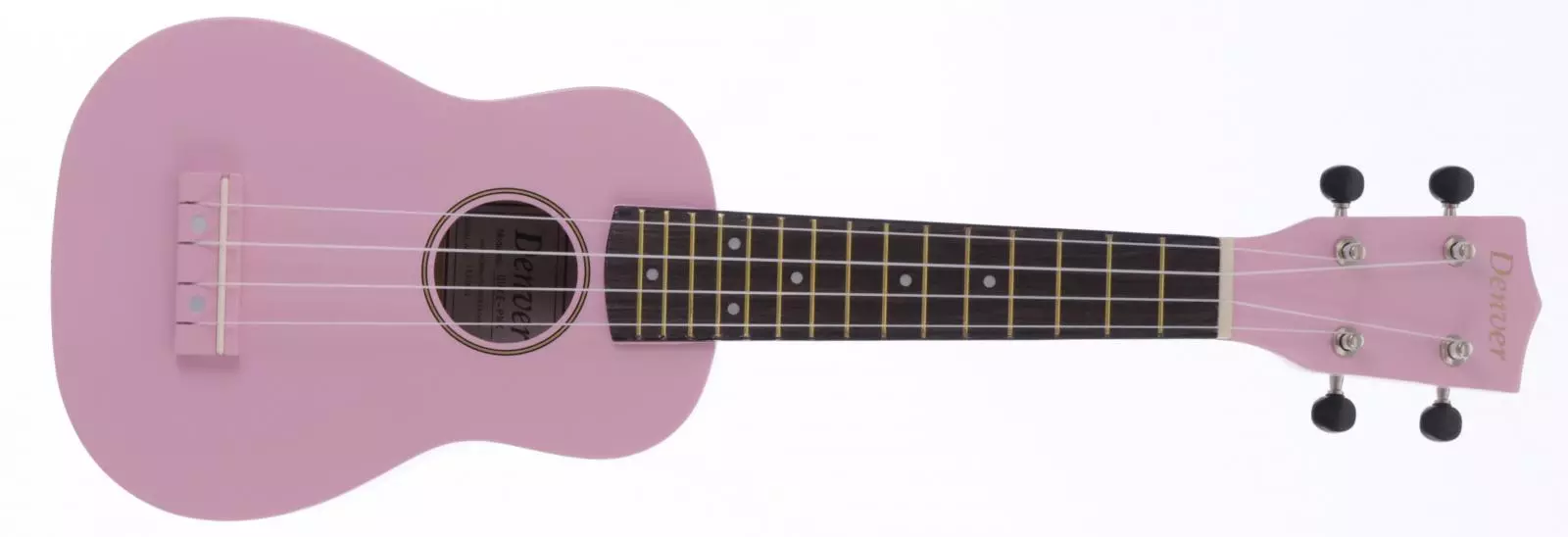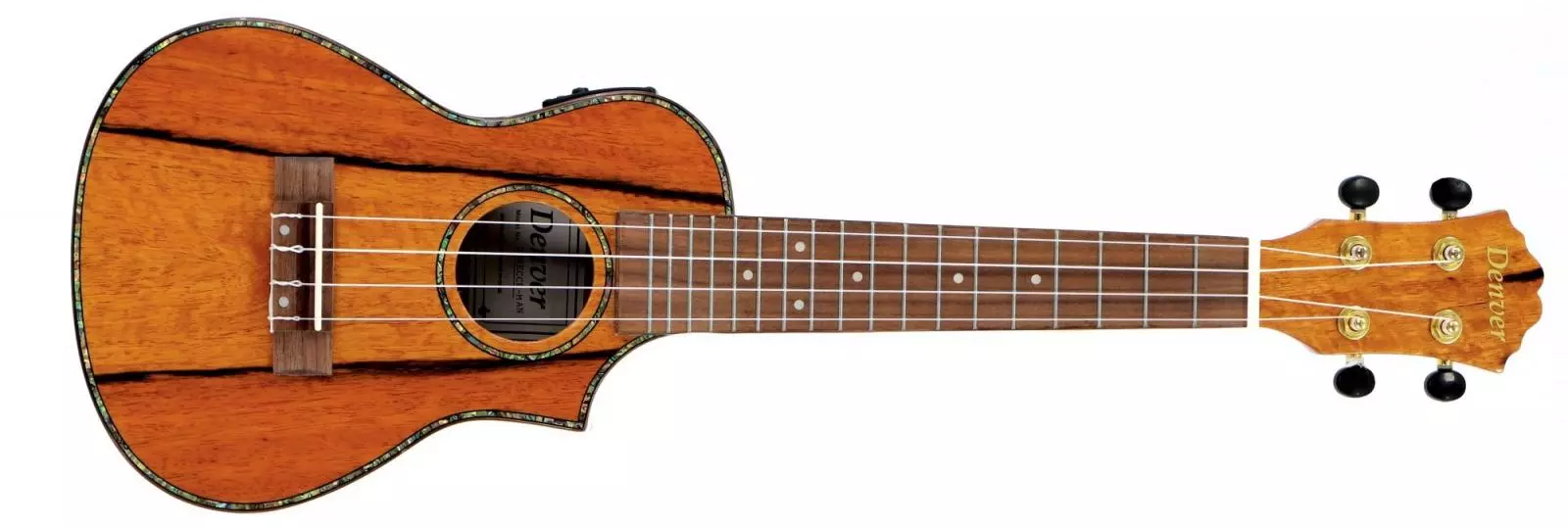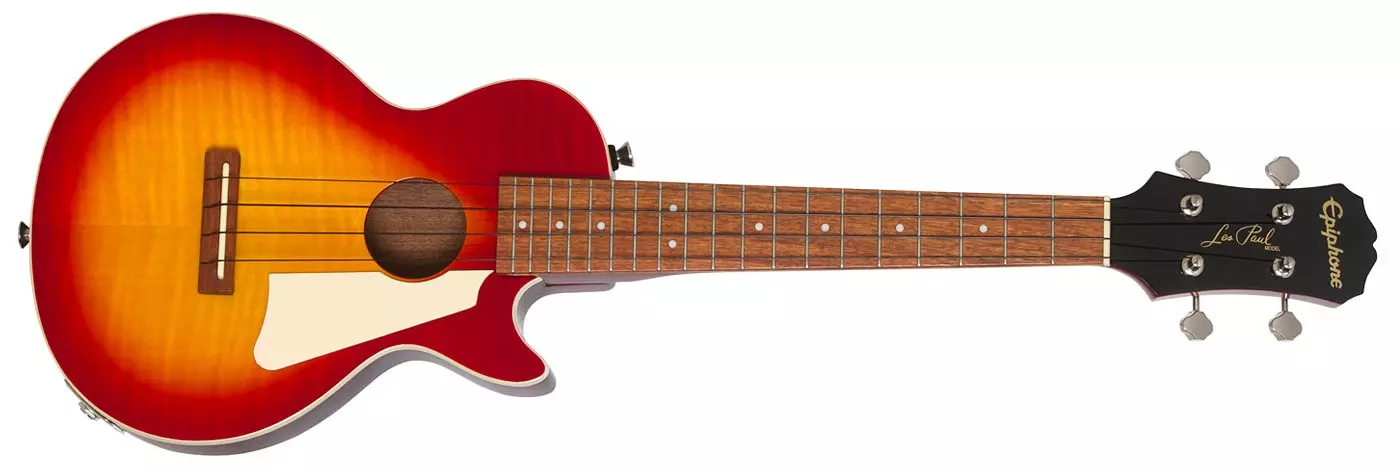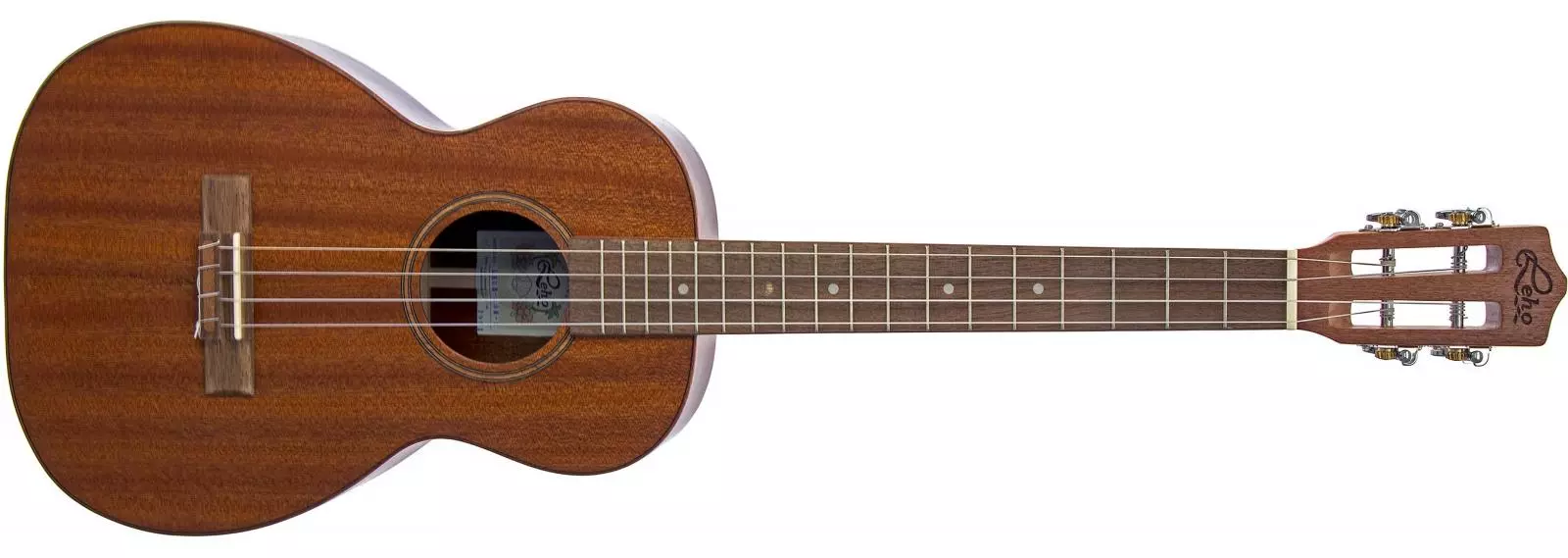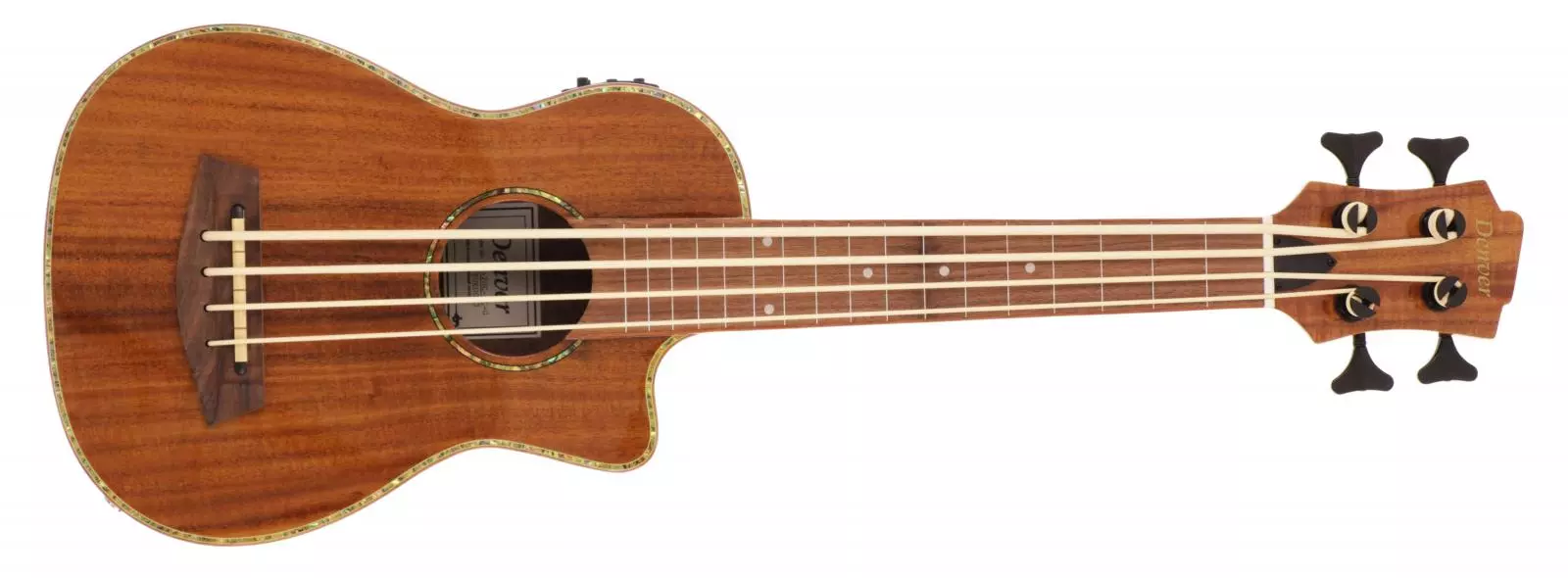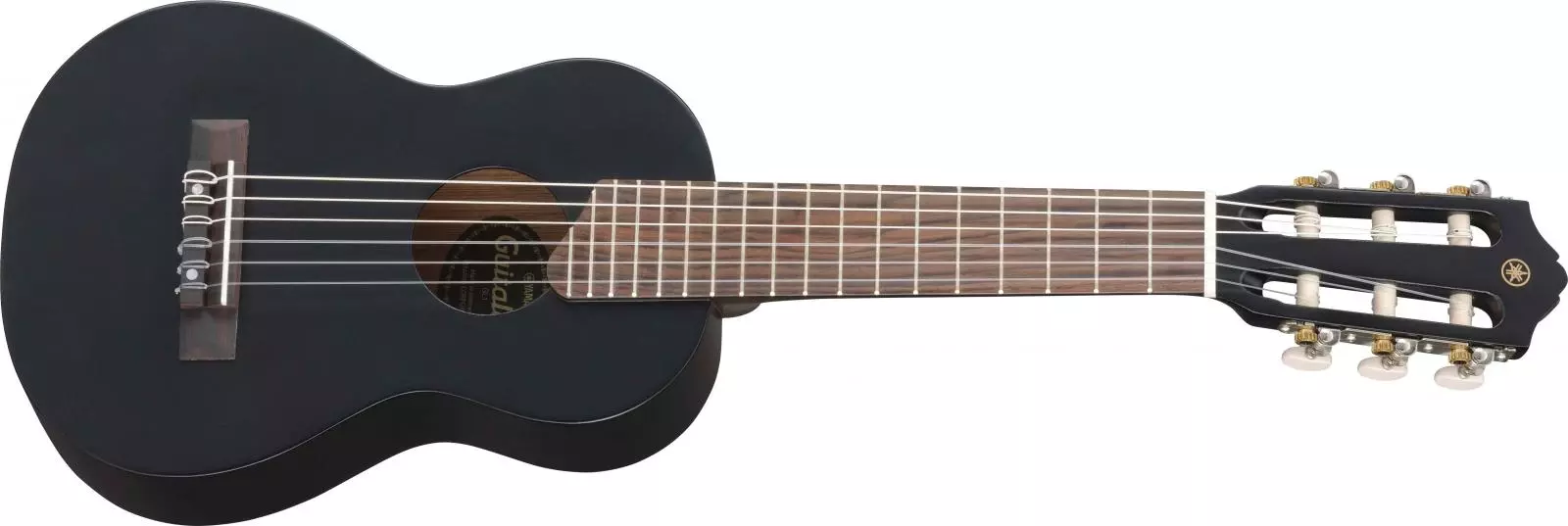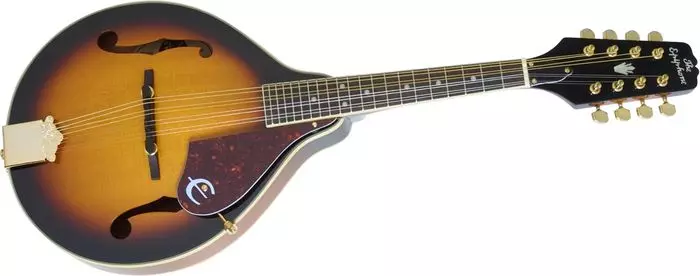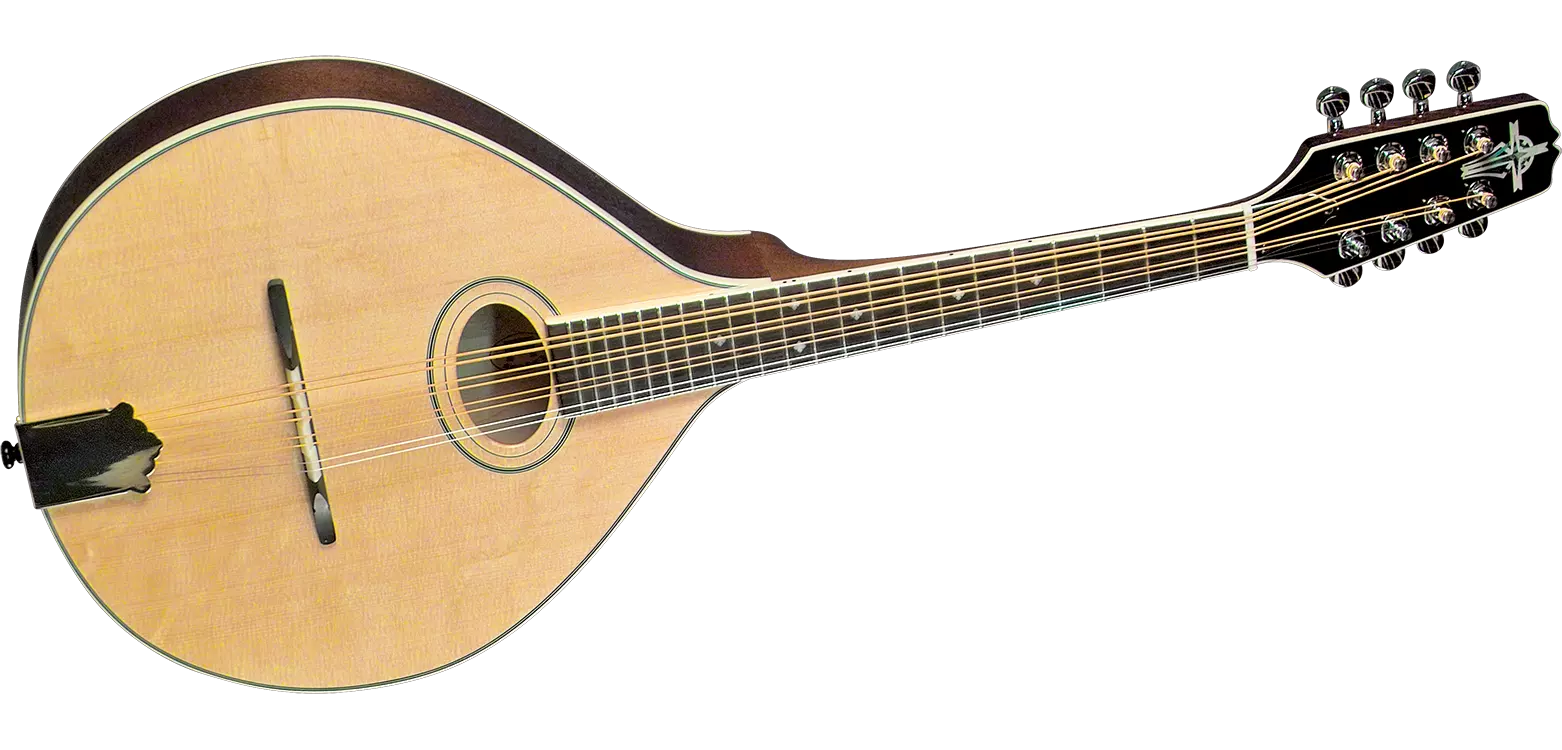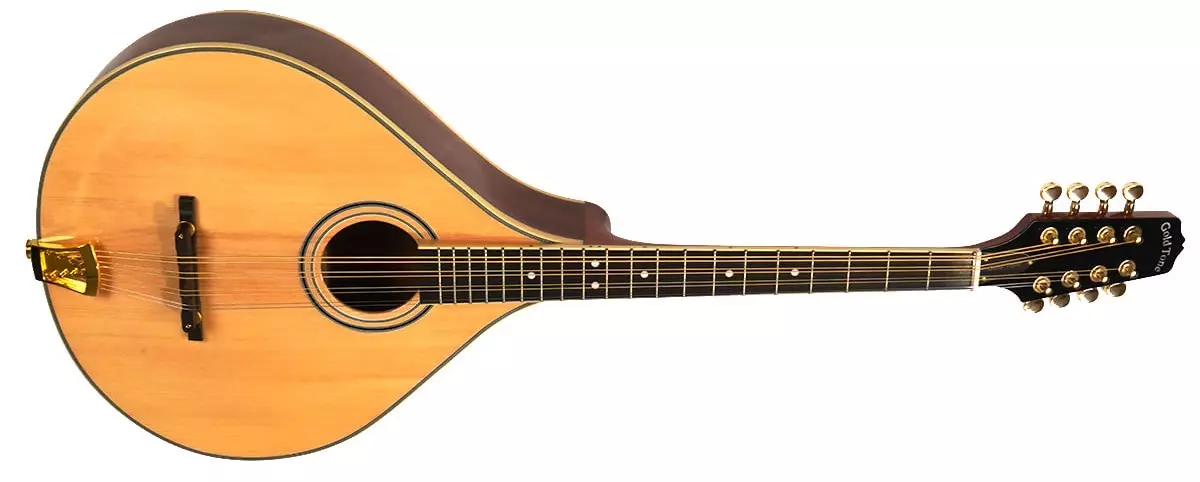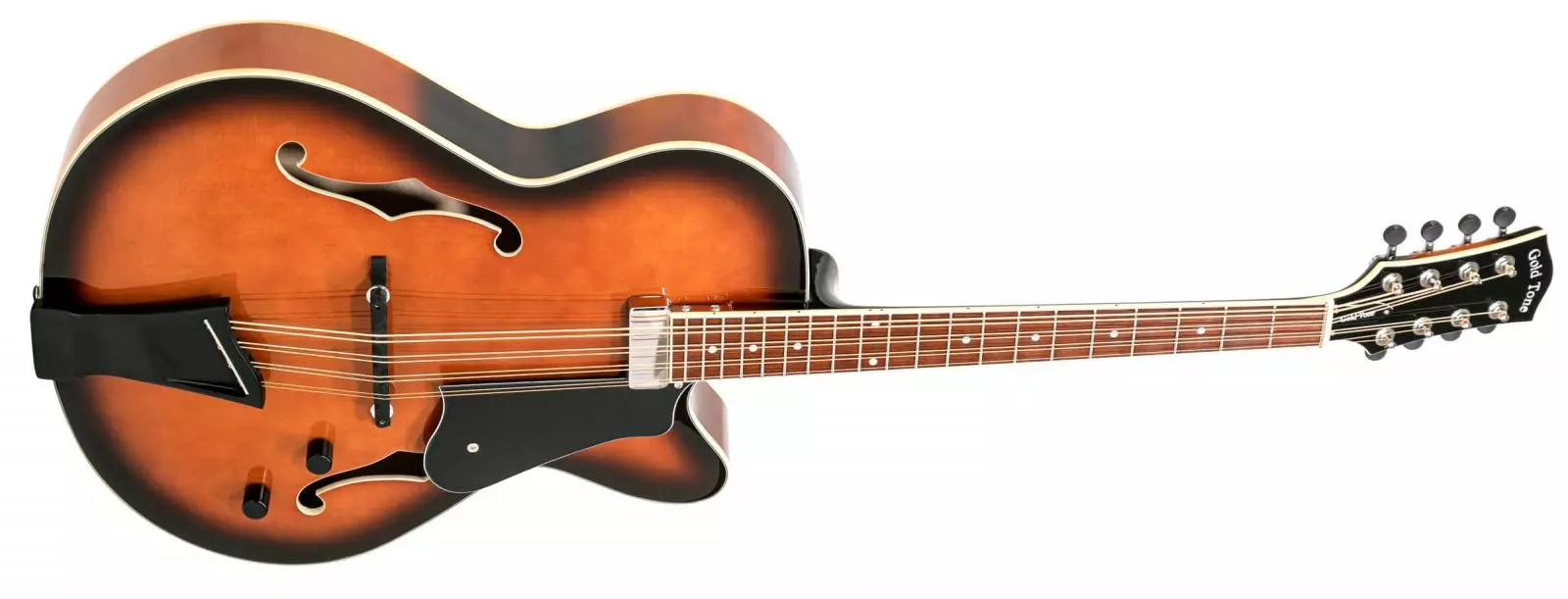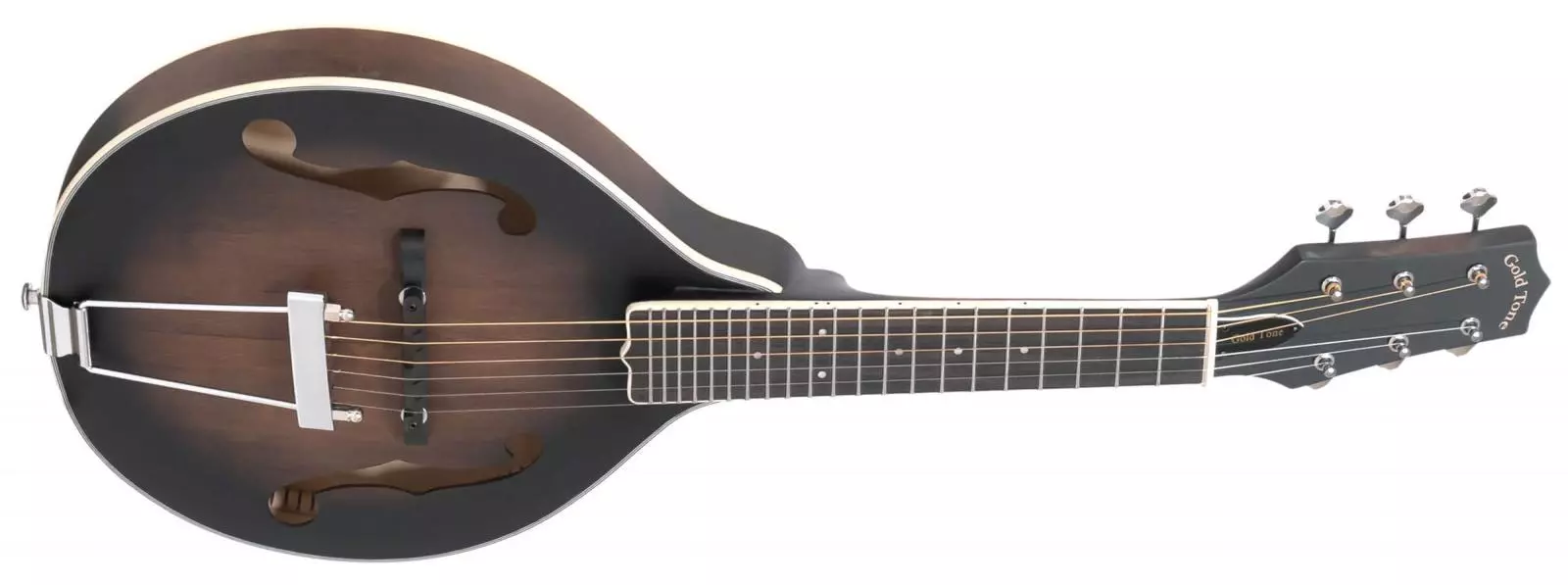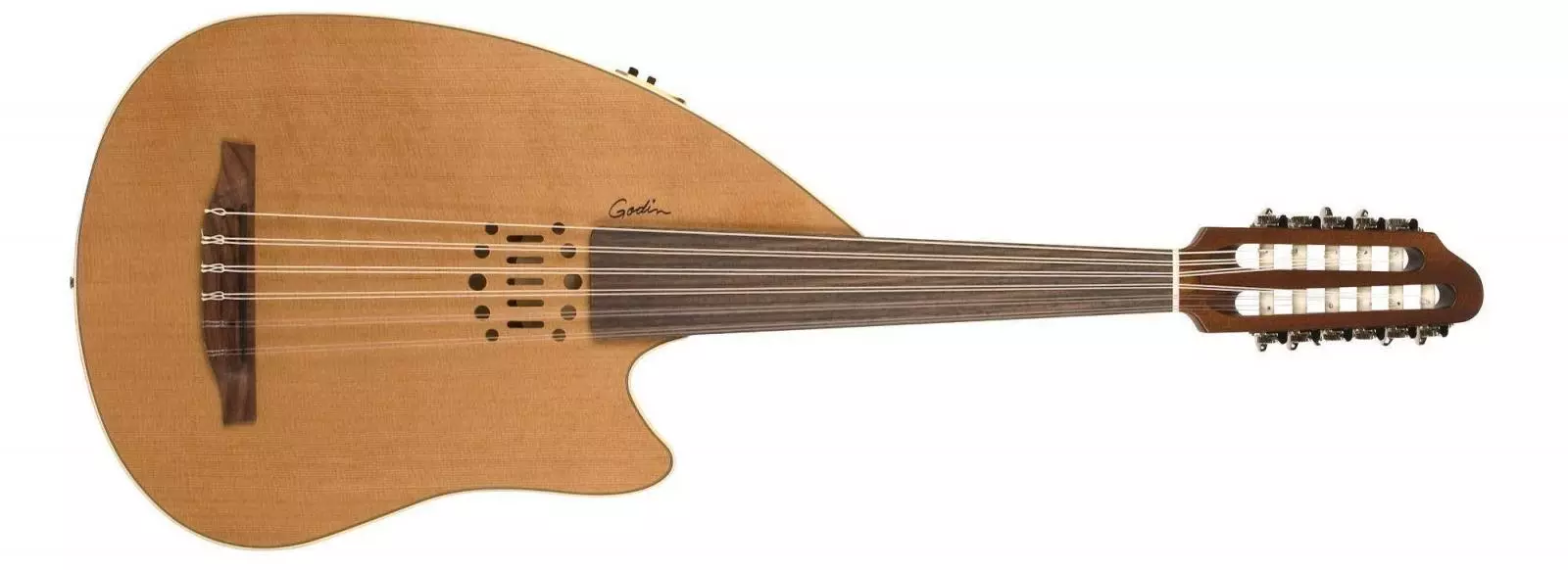Exploring the Guitar Family of String Instruments
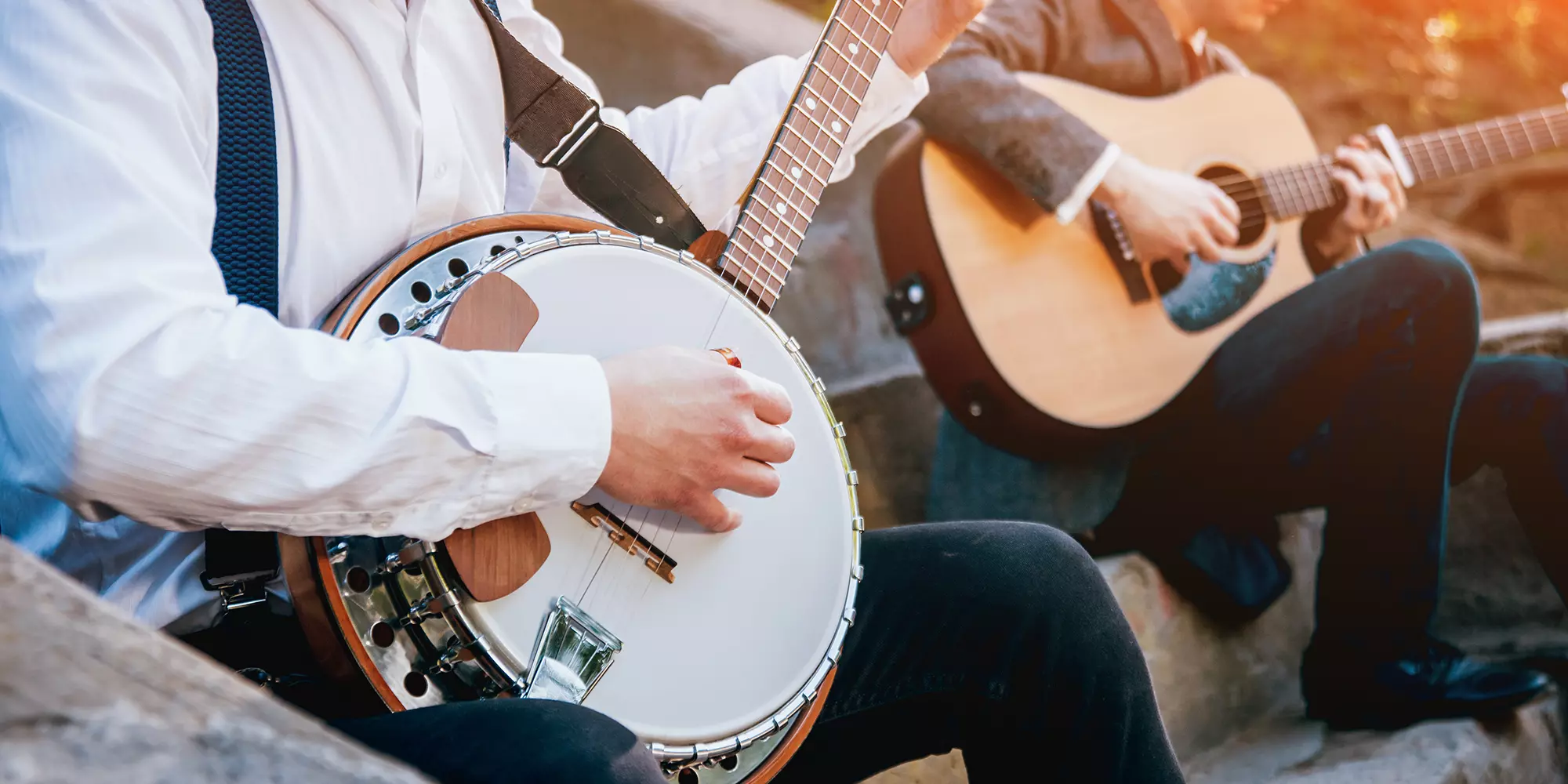
Last Updated: August 27, 2024
Music has been a part of human evolution for as long as we can remember. It all began with a hunter realizing they could bend a bow to create different sounds.
From the earliest stringed tools to the sophisticated instruments we use today, string instruments have evolved in countless ways. Each instrument has adapted to the musical needs of its time, creating a vast array of sounds and styles.
In this blog, we’ll explore some of the most popular string instruments and the different types of guitars that continue to shape the music world
Acoustic Guitar Family
Epiphone Songmaker DR-100 Acoustic Guitar - Vintage Sunburst
The acoustic guitar is arguably one of the most versatile instruments in Western music. With roots tracing back to the Renaissance, the acoustic guitar has become a staple in modern society. Whether in the hands of Dolly Parton, Andrés Segovia, Joni Mitchell, or Billy Strings, the acoustic guitar has a place in nearly every major genre.
The acoustic guitar's widespread popularity is due in part to its accessibility. It's relatively easy to learn the basics, yet offers endless possibilities for advanced techniques and styles. Few instruments can claim a vast array of styles like the guitar family of instruments.
Below we explore the most popular body shapes and how they impact the look, feel, and sound of the acoustic guitar.
Dreadnought Guitar
Yamaha FG820 Dreadnought Spruce/Mahogany Acoustic Guitar
The dreadnought is the most common type of steel-string acoustic guitar. Developed by Martin Guitars, dreadnought guitars feature a rectangular body with softly curved sides for comfort. It has six metal strings tuned E to e and a neck that meets the body at the fourteenth fret. Its balanced tone and projection make it a go-to choice for various music styles.
Dreadnought guitars can have a symmetrical or cutaway guitar body. Symmetrical guitars have equal proportions on both the left and right sides of the guitar. Cutaway guitars have a piece of the instrument cut off making it easier for the musician to play lower down the neck.
Grand Auditorium Guitar
Taylor Guitars 214ce Grand Auditorium Sitka/Rosewood Acoustic Guitar w/ES-2, Gig Bag
Slightly smaller than the dreadnought, the grand auditorium model guitar offers a more mid-focused sound with excellent clarity. Its narrower waist and smaller body make it more comfortable to play to the dreadnought. The mid-sized auditorium is designed to have the benefits of handling both picking and strumming. The grand auditorium is a versatile guitar for someone who enjoys playing a bit of everything.
Parlor/Parlour Guitar
Denver 38'' Parlour Mahogany Acoustic Guitar
The parlor or parlour guitar is the smallest member of the steel-string family with a compact body that produces a bright, midrange-focused sound. Its size and portability made it popular particularly among blues and folk musicians. Today, it’s popular among indie and acoustic artists looking for a unique tone.
Jumbo Guitar
Seagull Guitars Performer CW Mini-Jumbo Flame Maple QI w/ Gig Bag
As its name suggests, the jumbo guitar is the largest of the acoustic guitar family. The oversized body produces a loud, booming sound with a strong bass response. The jumbo has scaled-up proportions much like the auditorium but with an almost circular lower bout. The jumbo’s powerful projection ensures it can hold its own in a band setting, and its bold tone is perfect for energetic strumming and rhythm playing, making it a favorite for country music.
Despite its size, the jumbo guitar remains surprisingly versatile and capable of delivering thunderous chords and delicate fingerpicking. While most often seen on stage with country acts, any guitarist who needs an extra kick to their sound will find it in spades.
Archtop Guitar
Eastman Guitars DM1 Gypsy Jazz Acoustic with Gig Bag - Natural
The archtop guitar has similar proportions to a jumbo guitar, distinguished by its arched top and back, f-shaped sound holes, and floating bridge. This design gives it a louder, punchier sound than flat-top guitars, making it ideal for jazz and swing music.
The archtop's rich, warm tone and smooth playability have made it a favorite among jazz guitarists when paired with flatwound strings. Its unique sound also lends itself well to blues, rockabilly, and even modern folk music.
Classical Guitar
Alhambra Guitarras 4 F Flamenco Classical Guitar with Gig Bag
The classical guitar is the oldest member of the guitar family, originating in the Renaissance and Baroque periods. Its wide neck, flat fingerboard, hollow body, and nylon strings give it a warm, rich tone ideal for classical music, flamenco, and traditional folk styles. Classical guitars are typically played fingerstyle, unlike steel-string guitars, allowing for greater expression and dynamics. The classical guitar's soft, mellow sound is perfect for intimate settings such as jazz performances.
Flamenco Guitar
Alhambra Guitarras 3-F Flamenco Classical Guitar with Gig Bag
Closely related to the classical guitar, the flamenco guitar has a similar appearance but a distinct sound and playing style. Flamenco guitars were modified from the traditional Spanish guitar to better suit percussive styles and fast single-note runs of Flamenco music.
The action (the height of the strings above the fretboard) is usually lower, making it easier to play the rapid, intricate runs that define flamenco. It has made itself popular amongst modern jazz and Latin guitarists.
Specialty Guitars
Since humanity started on the road of plucking string instruments to make music, we’ve experimented with adding strings and doubling them to get a fuller sound, and this tradition carries on in the form of this guitar.
Throughout the ages, humans kept evolving the standard guitar to find new ways to create different sounds. Some of these tactics included decreasing or increasing the number of strings, thickness, and length. Combining all these tactics ultimately created the specialty guitars we know today.
Below we will explore the most popular specialty guitars and how they differ from regular guitars.
Twelve-String Guitar
Larrivee L-03R-12 Rosewood Recording Series L-Body 12-String Acoustic Guitar with Case
The twelve-string guitar is a variation of the standard six-string guitar, with each string doubled and grouped in pairs. The lowest four (E, A, D, and G) are tuned an octave above their typical guitar twins, while the remaining two (B and e) are matched to their doubles, creating a sound that isn’t far off a chorus effect you’d hear on an electric guitar, and makes for a full instrument.
This setup creates a fuller, richer sound with a natural chorus effect, making it popular in folk, rock, and blues music. The twelve-string’s shimmering tone adds depth and texture to any performance, often playing a supporting role in recordings and live performances.
Tenor Guitar
Kala Solid Mahogany Top Tenor Guitar with Gigbag - Tobacco Burst
The tenor guitar is a smaller, four-stringed instrument originally designed for tenor banjo players transitioning to guitar. The tenor guitar is typically tuned in fifths and features a shorter neck and smaller body. Its compact size and unique tuning make it an excellent choice for musicians looking for new tonal possibilities.
Its higher register was popular among jazz and folk players, particularly in the 1930s. Nowadays it isn’t attached to any particular genre. This leaves this particular guitar refreshingly unattached to any one style of play. Anybody looking for an instrument to break out of a rut would be well-advised to try out a tenor.
Baritone Guitar
Ibanez AE275BT Acoustic/Electric Baritone Guitar - Natural Low Gloss
The baritone guitar is a larger, lower-pitched cousin of the standard guitar, with thicker strings and a longer neck. The long neck on the baritone enables it to handle tunings much longer than the average guitar, commonly tuned to B standard. This gives it a deep, resonant tone that bridges the gap between a guitar and a bass.
Baritone guitars are often used in rock, metal, and country music, where their powerful low end adds weight and depth to a performance. They’re also popular in ambient music for their rich, atmospheric sound.
Resonator Guitar
Epiphone Hound Dog Dobro - Round Neck
The resonator guitar, also known as a dobro, features a metal cone or resonator attached to the bridge instead of a traditional wooden soundboard. The unique design produces a loud, metallic sound that is instantly recognizable. The resonator guitar is a staple in bluegrass, blues, and slide guitar playing.
Resonator guitars come in square-neck and round-neck versions, with the former often played on the lap using a slide. Their distinctive tone is perfect for adding a bit of grit and twang to a performance. While the body of the instrument is usually consistent in dimensions – roughly the same shape and size as an auditorium model – there are quite a few different classes of resonator guitars.
Lap Slide Guitar
Gold Tone LS-6 6-String Lap Steel Guitar
The lap slide (or lap-steel) guitar is a style of guitar laid flat on the player's lap, with the slide parallel to the floor. It typically features a solid body and a high action, making it ideal for slide playing.
Lap steels are commonly used in Hawaiian music, country, and western swing. The player uses a slide bar instead of a traditional slide to glide over the strings. Most guitars can be adapted to play in the lap slide position.
Banjos
The banjo is an instrument with deep roots in folk music, known for its bright lively sound and rhythmic versatility. It was originally brought to the Americas by enslaved people in the Caribbean in the 1600s. the banjo has evolved into a symbol of Americana particularly in bluegrass and country music.
Its unique construction—a drum-like body with a stretched membrane—gives the banjo its characteristic twangy sound, most popular in bluegrass and country music. The modern banjo now uses a drum head instead of a body to amplify the strings, and like the guitar, has evolved and shifted to better fit the genres it has come to dominate.
Below we will explore other versions of popular banjos derived from the original banjo.
Five-String Banjo
Epiphone MB-100 - 5-String Open Back Banjo
The five-string banjo is most commonly used in bluegrass music. It features a shorter fifth string mounted up the bass side of the neck, giving it a distinctly asymmetrical shape. It features a fifth string higher than the others, creating a distinctive note that defines the instrument’s sound. The banjo is versatile in various genres, from traditional folk to modern country and even some rock.
Tenor and Four-String Plectrum Banjo
Gold Tone Cripple Creek 4-String Irish Tenor Banjo with Resonator
While they are distinct instruments, these two members of the Banjo family are nearly twins at first glance. The tenor and plectrum banjos are similar in appearance but differ in tuning and playing style. The tenor and four-string plectrum banjos have the iconic drum-style body, and four strings, and are instruments that gained popularity in American folk and ragtime jazz.
Their differences lie in scale length and tuning - where the tenor ranges from a seventeen-inch scale up to twenty-three inches, the four-string plectrum sits pretty at twenty-six to twenty-eight inches.
The tenor banjo, with its shorter neck and four strings, is usually tuned in fifths (C-G-D-A) and is popular in Irish traditional music and jazz.
The plectrum banjo, on the other hand, has a longer neck and is typically tuned C-G-B-D, similar to the top four strings of a guitar.
The tenor's smaller size provides additional flexibility in the strings, while the plectrum banjo's longer length offers extra crispness. However, because of their similar characteristics, it's not uncommon to see a musician adjusting a tenor's tuning to function as the other. Unfortunately, going the other way can make it easier to break strings, but it is possible.
Banjo Hybrids
An often overlooked element of the growth and evolution of musical instruments is the hybridizing and inventing of new instruments to better suit the music of their days. The banjo’s unique sound has inspired several hybrid instruments, combining the banjo’s resonant body with the neck and tuning of other string instruments. Amongst the many Frankenstein’d failures that have fallen to the wayside, two banjo hybrids that first appeared over a century ago are still going strong, the banjitar and banjolele.
Banjitar
Gold Tone Cripple Creek 6-String Banjitar
The banjo guitar, or banjitar, is exactly what it sounds like. The banjitar is a six-string banjo tuned like a guitar, offering the twangy sound of a banjo with the familiar playability of a guitar. This is the instrument of choice for the guitarist who wants the banjo sound but doesn’t feel like learning an entirely new instrument – or for someone who needs the extra acoustic volume without the weight of a resonator.
Banjolele
The banjolele is a cross between a banjo and a ukulele, combining the smaller body of a banjo with the neck of a ukulele. Its small size and nylon ukelele strings rather than metal ones give the banjolele a unique sound that appeals to any musician. These hybrids are perfect for musicians to experiment with new sounds while maintaining familiar playing techniques.
Ukulele Family
The ukulele, a small string instrument with roots in Portugal and Hawaii, has become a global symbol of joy and simplicity. The ukulele quickly became popular with its cheerful sound and easy playability making it a favorite among beginners and seasoned musicians.
Despite its small size, the ukulele is a versatile instrument used in multiple musical styles, from traditional Hawaiian music to modern pop and rock. Its portability and distinctive sound make it perfect for casual playing, live performances, and recording.
The explosion in popularity caused leading manufacturers to expand the ukulele family almost immediately.
Soprano Ukulele
The firstborn adaptation of the ukulele family, the soprano, is the smallest and most traditional size, known for its light, airy tone. It is typically tuned g-C-E-A and is popular for people of smaller stature thanks to its compact size and straightforward playability. Despite being under two feet in length, the soprano has the brightest sound of the ukulele family. Its portability also makes it a great companion for travel and outdoor playing.
Concert Ukulele
Denver Duke CE Mango Active Concert Ukulele
Slightly larger than the soprano, the concert ukulele offers a full, richer sound with more volume and sustain. Its longer scale length provides more room on the fretboard, making it comfortable to play for those with larger hands. The concert ukulele is versatile enough for strumming and fingerpicking, making it a favorite among intermediate and advanced players. The concert ukulele is well-suited for a wide range of musical genres, from traditional Hawaiian to contemporary pop.
Tenor Ukulele
Epiphone Les Paul Acoustic/Electric Tenor Ukulele - Cherry Sunburst
The tenor ukulele is the largest of the traditional ukulele sizes and has a deeper, more resonant tone. While still tuned to the same g-C-E-A as the soprano and concert, its longer neck and wider fretboard make it ideal for fingerstyle playing, allowing for more complex chord and melodic lines. It’s also popular for “low-G” tuning, which replaces the high G string with a lower G, giving the instrument a sound closer to a classical guitar.
Baritone Ukulele
Leho All-Solid Mahogany Baritone Ukulele
The baritone ukulele is the largest and deepest-sounding member of the ukulele family. It features a longer neck and wider fret spacing making it a popular option for jazz players and guitarists. Unlike the other ukulele family members, this ukulele is traditionally tuned D-G-B-E, the same as the four highest-tuned strings on an acoustic guitar.
The baritone’s unique trait of amplifying the sound makes it a favorite for solo performances and ensemble work. The baritone ukulele has a warm, rich tone perfect for jazz, blues, and folk music.
Bass Ukulele
Denver Acacia Fretless Bass Ukulele with Gig Bag
The bass ukulele features thick rubber strings and tuning similar to a bass guitar (E-A-D-G). The only notable visual difference between a bass ukulele and a baritone ukulele is the size of the tuning machine heads, which are larger to accommodate the thicker string tension. Despite its small size, the bass ukulele produces a surprisingly deep and resonant tone, making it a great option for acoustic performances or small ensembles.
Its portability and ease of play make it an attractive alternative to the larger and heavier traditional bass guitar. The bass ukulele is perfect for musicians looking to add a unique, low-end presence to their music. It packs a punch into a small package and has earned its place in the ukulele family.
Guitalele
The guitar ukulele, or guitalele, is a hybrid instrument that combines the body of a ukulele with the tuning and six-string configuration of an acoustic guitar. Unlike the bass, it doesn't have the same tuning as the larger alternative. The guitalele is typically tuned A-D-G-C-E-a, retaining the same G-C-E-a tuning of the standard ukulele.
This hybrid instrument is ideal for guitarists who want to learn the ukulele or explore the ukulele’s bright, cheerful sound while maintaining familiar chord shapes. The guitalele’s compact size and versatile tuning make it a popular choice for traveling musicians.
Mountain Dulcimer
Applecreek Teardrop Style Dulcimer
The mountain dulcimer, also known as the Appalachian dulcimer, is a unique string instrument with deep roots in American folk music. Its name originated from the Appalachian Mountains in the early 19th century. The mountain dulcimer is the simplest instrument in this list characterized by its hourglass or teardrop-shaped body, three or four strings, and diatonic fretboard.
They commonly use four strings tuned to three notes with the highest string doubled. Unlike other string instruments, the mountain dulcimer is typically played by laying it flat on the lap and strumming or plucking the strings, similar to a lap slide guitar.
Unlike every other instrument on this list, the mountain dulcimer has a diatonic fretboard which spaces the frets to create a chromatic scale. In simpler teams, it only includes the notes of a specific scale, making it easy to play simple melodies without worrying about incorrect notes. This accessibility has made the dulcimer great for beginners and folk enthusiasts.
Despite its simplicity, the mountain dulcimer offers a range of expressive possibilities, from gentle, soothing melodies to fast, rhythmic strumming patterns. The mountain dulcimer’s simple, melodic sound makes it ideal for traditional folk music, where it’s often used to play old-time tunes and hymns.
Mandolin Family
Standing between the world of classical music and folk is the mandolin family. The mandolin entered the mainstream culture originating in Italy around the 18th century. The mandolin has become a staple in various musical genres, from classical to bluegrass and folk.
The distinctive tear-drop body, elongated neck, and eight paired strings of the mandolin family can be found in pubs and stages across continents. Over time, the mandolin has evolved into a family of instruments of different sizes and tunings, each offering its unique voice and playing style.
Mandolin
The mandolin is the soprano member of the family and comes in two main flavours: the 'F' style and the 'A' style. The mandolin’s tuning (G-D-A-E) is the same as the violin which shares its naming contention.
The A-style mandolin sports an ovular body that is typically quite plain with F-shaped sound holes on either side and a neck that joins the body at the twelfth fret.
The F-style is much more ornate, keeping the same basic structure but adding a scroll on the bass side of the body and two angular protrusions on the treble side.
The mandolin is a popular option for fiddle players looking to try a different instrument. Its small size and fast, responsive action make it perfect for playing intricate melodies and rapid tremolo picking. The mandolin is most commonly associated with bluegrass and country music, where it’s used for both melodic leads and rhythmic ability.
Mandola
Trinity College Celtic Mandola - Solid Spruce/Maple
The mandola is the alto member of the mandolin family, slightly larger than the mandolin and tuned a fifth lower (C-G-D-A). It offers a deeper, resonant sound perfect for adding richness and warmth to an ensemble. The mandola is less common than the mandolin but is favored by musicians who appreciate its mellow tone and versatile tuning. Mandolas are often used in folk music, where their darker sound complements the bright, high-pitched mandolin.
Octave Mandolin
Gold Tone OM-800+ Octave Mandolin w/ Case
The octave mandolin is tuned an octave lower than the regular mandolin (G-D-A-E) and offers a deep, resonant tone. The octave mandolin is often confused with the Irish bouzouki, which has a similar teardrop body with a flat top and longer neck and tuning but a longer scale length and a more open, ringing sound. The octave mandolin’s versatility and unique voice make it perfect for traditional Irish and Scottish music.
Mandocello
Gold Tone 8-String Mandocello with Pickup and Hardshell Case
The mandocello is the baritone member of the mandolin family. The mandocello’s large archtop shape and eight strings make it more challenging to play than other instruments of the mandolin family, but its expressive range makes it a rewarding instrument for dedicated musicians. The mandocello is commonly tuned C-G-D-A and has a rich sound that is well-suited for a variety of genres, though it's most often seen in traditional folk.
Manditar
Gold Tone A-style Manditar - Tobacco Sunburst
The manditar, creatively known as the mando-guitar or guitar-mandolin, is a hybrid instrument that combines the body of a mandolin, with the tuning configuration of a guitar. It has six strings tuned like a guitar, but an octave higher, giving it a bright, punchy sound. The manditar is popular among guitarists looking to explore the mandolin’s unique sound while maintaining familiar chord shapes.
Oud
Godin Guitars MultiOud Encore Nylon Natural SG w/Bag
The oud is an instrument with a history unlike any other on this list. The oud is the oldest instrument dating back to the Arabian peninsula and the Mediterranean. The oud is considered the ancestor of the European lute and is still widely used in Middle Eastern, North African, and Mediterranean music. The oud is characterized by its pear-shaped body, headstock bent back at a 45-90° angle, and friction pegs and remains largely unaltered from its predecessor.
The oud typically has 11 strings, arranged in five pairs with a single bass string., and is played with a long plectrum known as a risha or mizrab. Its tuning and scale length vary widely depending on regional and cultural traditions. Despite its ancient origins, the oud remains a legendary instrument used today in traditional and contemporary music worldwide.
Conclusion
String instruments have a special place in music, offering a range of sounds and styles that resonate with musicians and listeners alike. Whether you’re into the gifted guitar, the bubbly banjo, or the melodic mandolin, there’s a string instrument for everyone. Additional members of the string family that weren't mentioned such as the violin and viola can be found at your local Long & McQuade store or online.

